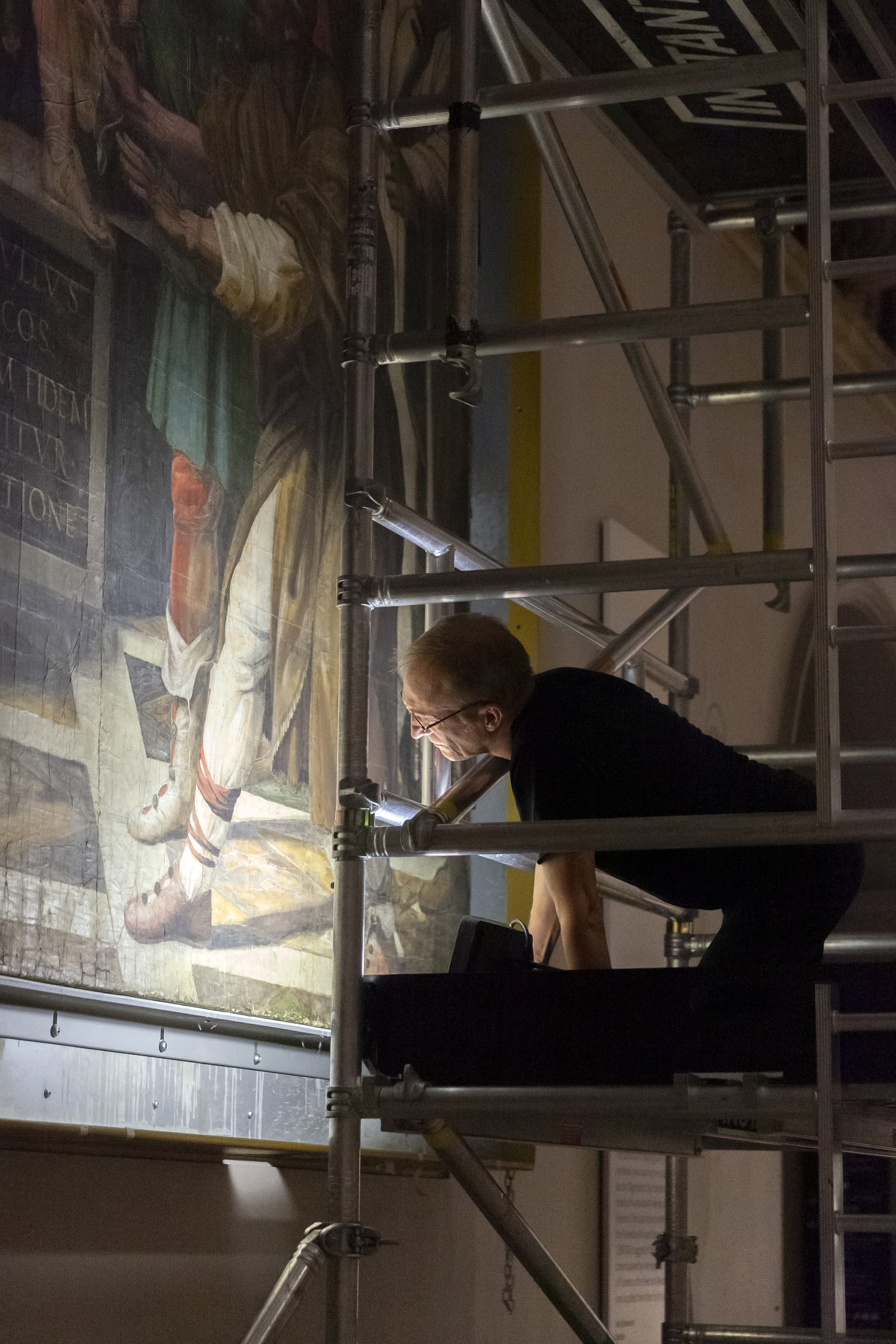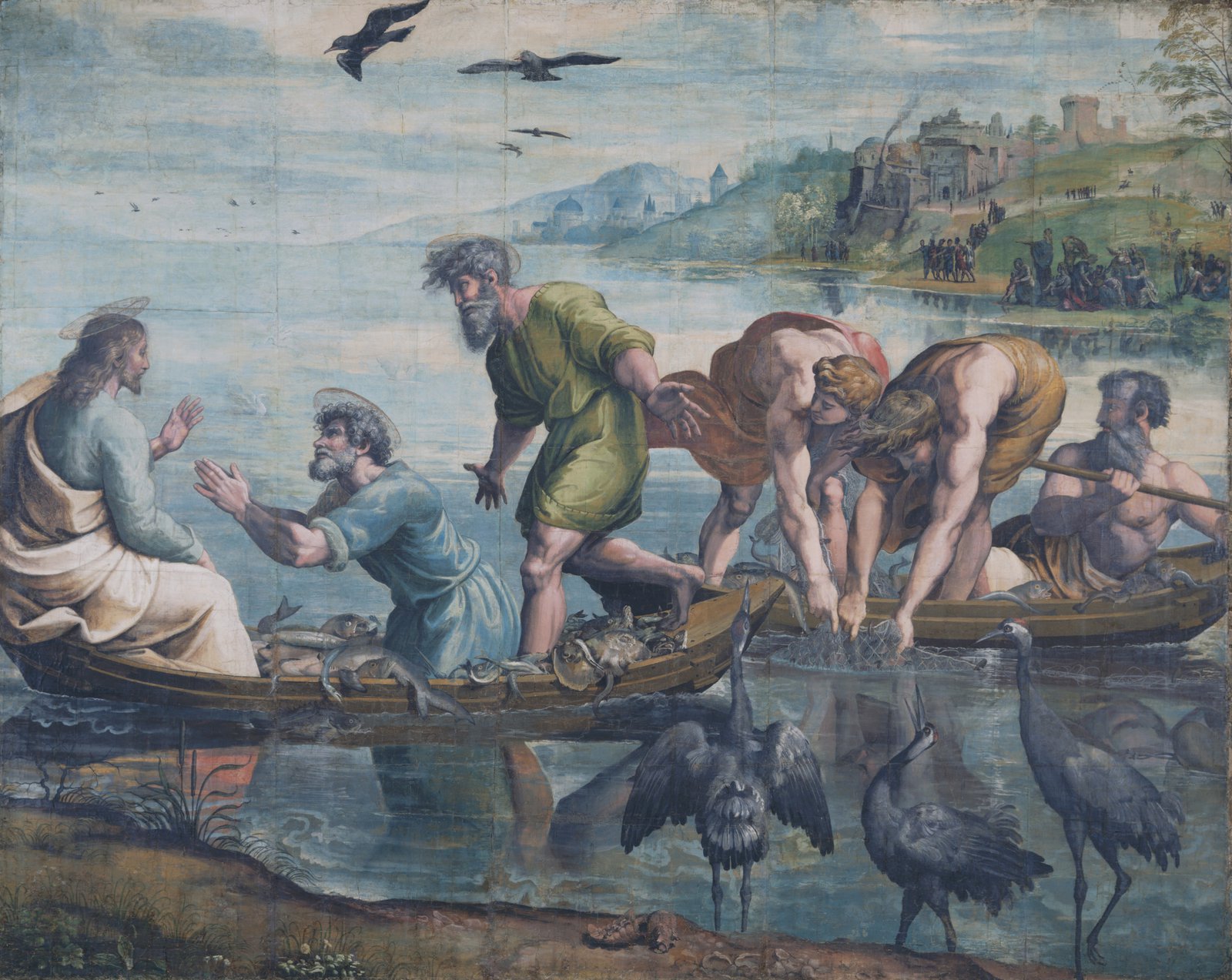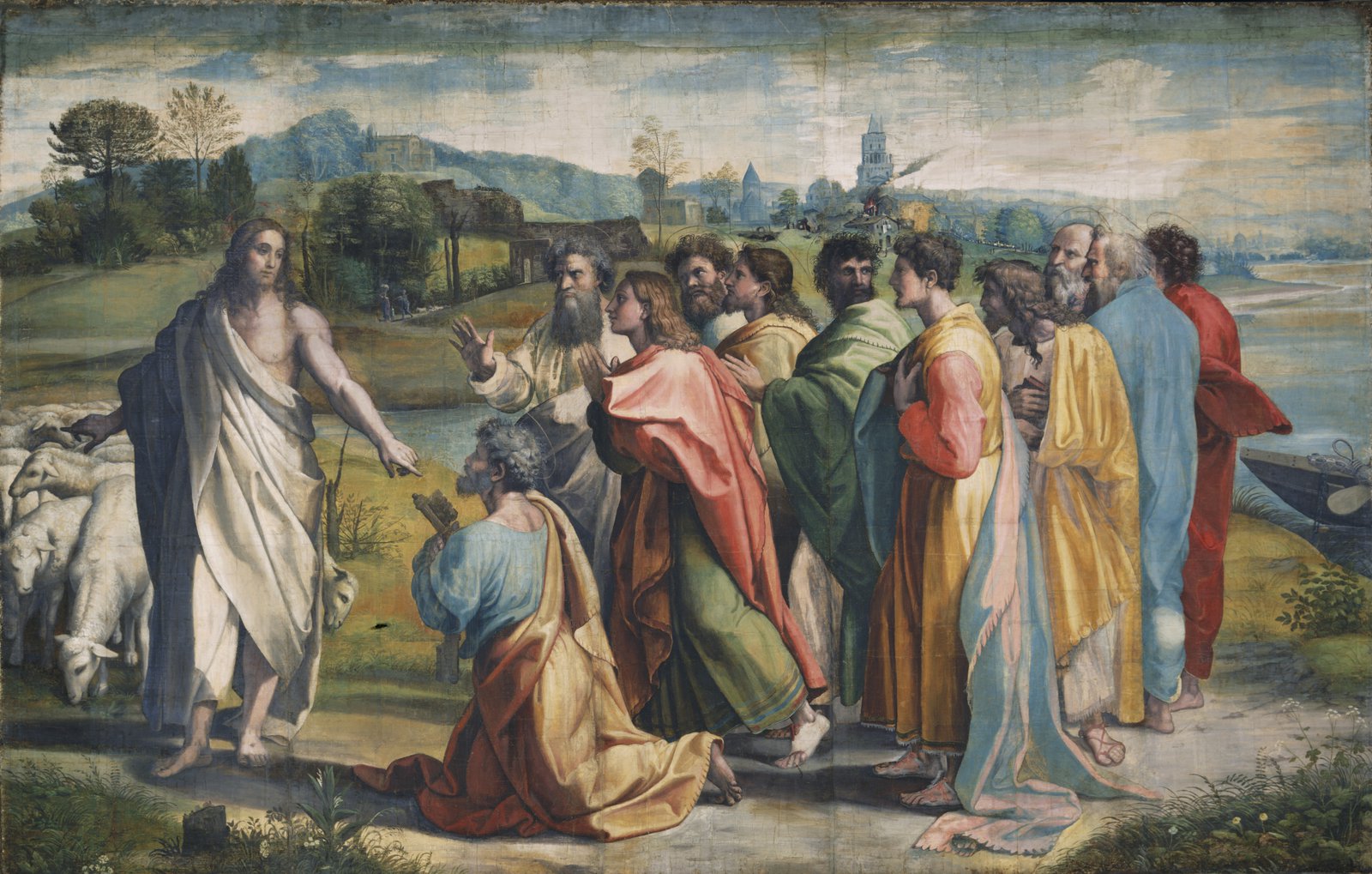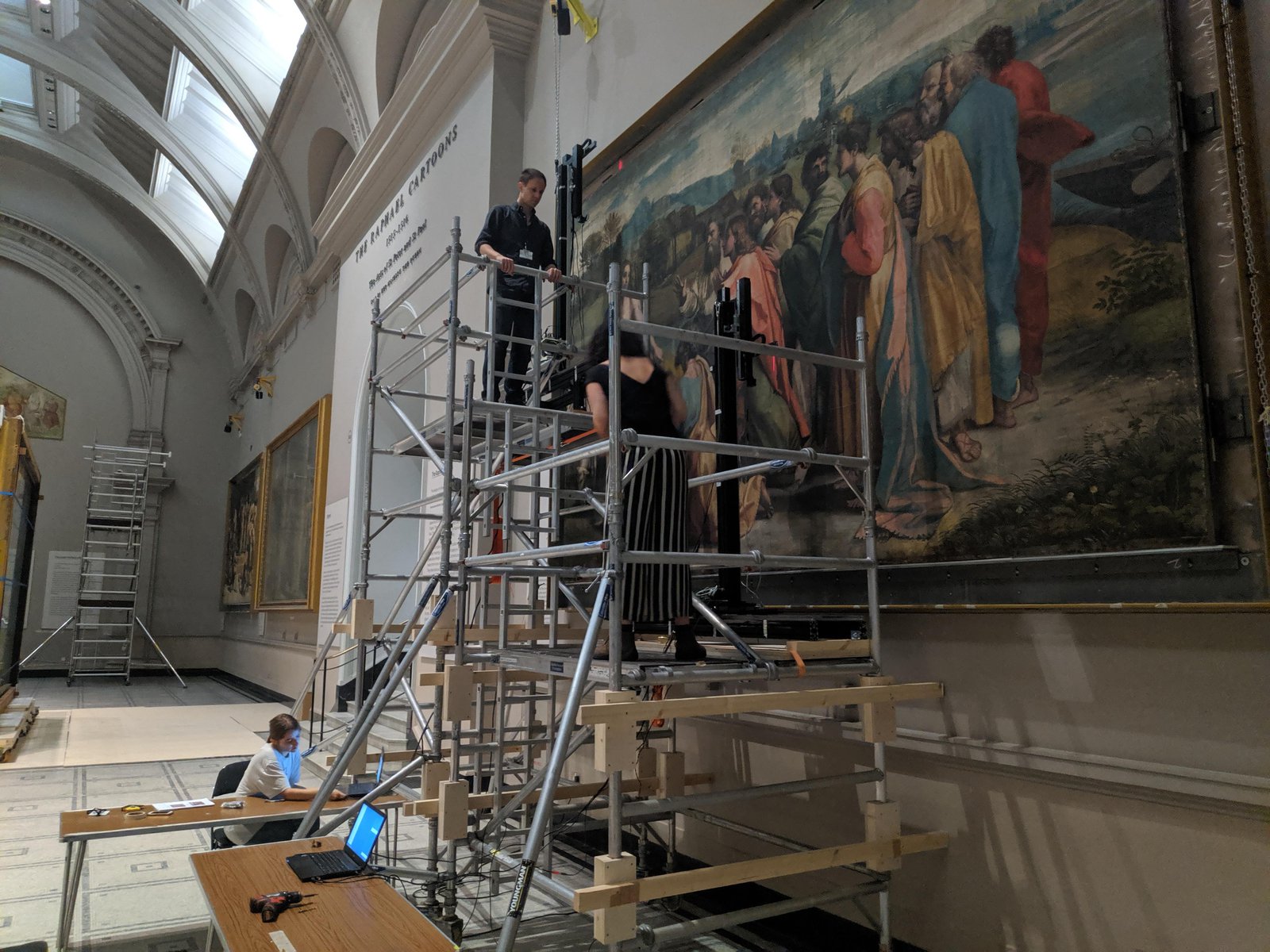
The V&A’s Raphael Court – home to the Raphael Cartoons – has had a nine-month refurbishment to mark the 500th anniversary of Raphael’s death. The refreshed gallery and its new interpretive approach will transform the way museum visitors experience the Cartoons, lent to the V&A from the Royal Collection by Her Majesty The Queen.
The Raphael Cartoons are among the greatest treasures of the Renaissance in the UK. Shortly after his election in 1513, Pope Leo X commissioned Raphael to create a set of ten full-scale designs for a series of tapestries for the Sistine Chapel in the Vatican Palace, illustrating scenes from the lives of Saint Peter and Saint Paul. Once complete, the Cartoons – each measuring around 5 metres wide and 3.5 metres high – were sent to the workshop of merchant-weaver Pieter van Aelst in Brussels, which transformed the
monumental designs into tapestries. Seven of the Cartoons survive to this day, brought to Britain in the
early 17th century by the Prince of Wales, later Charles I. They remained in the Royal Collection and were
lent to the South Kensington Museum – now the V&A – by Queen Victoria in 1865 in memory of Prince
Albert, and have been on public display in the museum ever since.
The V&A and their team of experts are introducing a new decorative scheme and infrastructure in the Raphael Court to reveal the Cartoons’ extraordinary details and vibrant palette. Acoustic panelling will help to create a calmer environment, and bespoke furniture gives new opportunities to sit and enjoy the works at leisure. State-of-the-art LED lighting will reduce reflections on the glass and produce a marked increase in visibility of the works.
The refurbished gallery’s new interpretive approach will provide the public with a deeper level of access to the Raphael Cartoons, enhancing our understanding of these monumental works of art. In August 2019, the V&A and Royal Collection Trust worked with Factum Foundation and Momart to carry out a high-resolution recording project, supported by the Royal Commission for the Exhibition of 1851. This involved unframing each Cartoon to capture high-resolution three-dimensional data of the surface, and panoramic composite photography to record the colour and gather infra-red data. It also provided an opportunity to carry out conservation checks, glass cleaning and frame cleaning.
Each 3D image took over 95 hours to capture with four of Factum’s Lucida 3D Scanners mounted on
scaffold towers. The resulting images reveal the Cartoons’ unique surface texture, showing the
composite sheets of paper that make up each Cartoon; evidence of the process of duplicating the
Cartoons by ‘pouncing’ the paper – a series of minute holes used by the tapestry weavers to transfer the
designs; and the marks of previous restorations.
One of the V&A’s largest and most dramatic galleries, The Raphael Court is almost identical in
proportions to the Sistine Chapel and was last refurbished from 1992 to 1996. Combined with enhanced
interpretation, the new scheme – with its darker colour palette, state-of-the-art lighting, refreshed
furniture, new graphics and on-site digital experience – will heighten our visitors’ viewing experience and
their enjoyment of these works of art.
For more information on the story of the Raphael cartoons at the V&A, click here.



